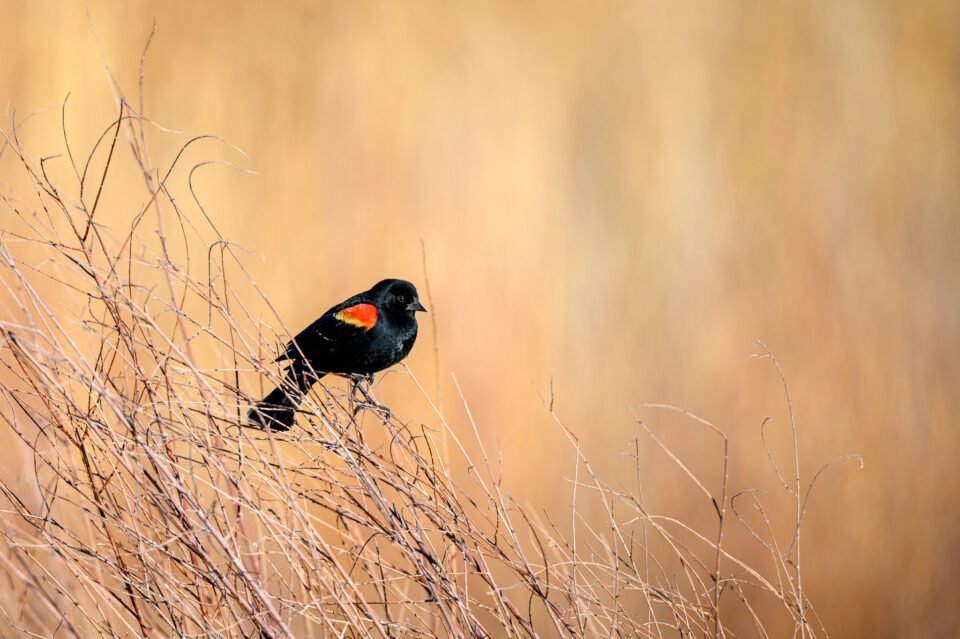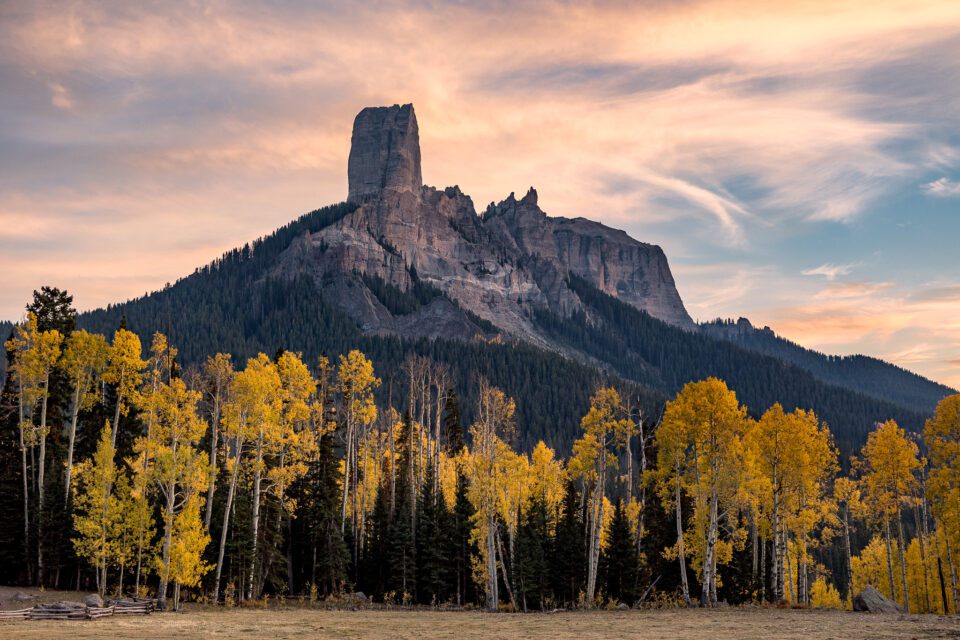Two of the most interesting mirrorless cameras today are the Nikon Z6 II and the Canon EOS R6. Although they target slightly different audiences, they also have a lot of similarities. Today, I’ve put them head-to-head in everything from specifications to image quality.
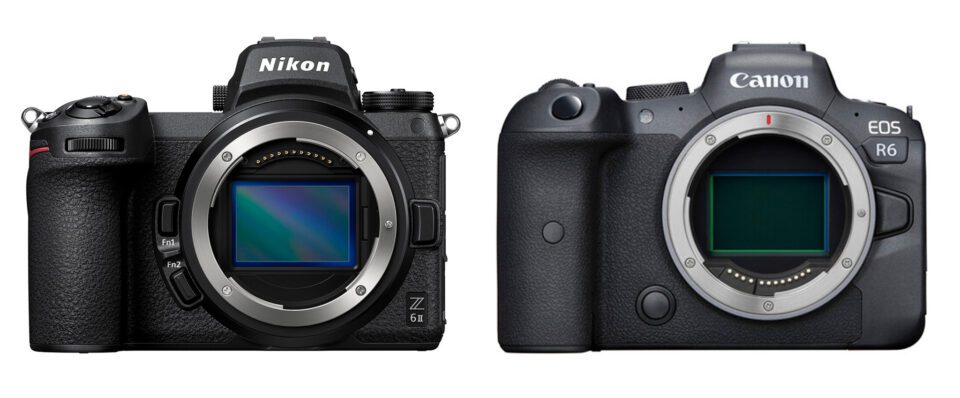
We’ll start by looking at the specifications and features of the two cameras:
Nikon Z6 II and Canon EOS R6 Specifications
| Camera Feature | Nikon Z6 II | Canon EOS R6 |
|---|---|---|
| *Canon’s official specifications say the EOS R6 can autofocus from -6.5 EV to +20 EV. However, Canon assumes an f/1.2 lens at ISO 100, while other manufacturers assume an f/2 lens at ISO 100 for this specification. Thus, the standardized focusing EV range for the EOS R6 is -5 EV to +21.5 EV. Read more at EV explained. | ||
| **The Nikon Z6 II official dimensions do not include the depth of the protruding viewfinder. To match the standards of other manufacturers, roughly 15 mm (0.6 inches) must be added to the Z6 II’s depth measurement, for a total of 85 mm (3.3 inches). | ||
| Announced | October 14, 2020 | July 9, 2020 |
| Sensor Resolution | 24.5 MP | 20.1 MP |
| Low-Pass Filter | Yes | Yes |
| Sensor Type | BSI CMOS | CMOS |
| In-Body Image Stabilization | Yes, 5-axis | Yes, 5-axis |
| Sensor Size | 35.9 × 23.9 mm | 36.0 × 24.0 mm |
| Image Size | 6048 × 4024 | 5472 × 3648 |
| Pixel Pitch | 5.94 µm | 6.58 µm |
| Native ISO Sensitivity | ISO 100-51,200 | ISO 100-102,400 |
| Image Processor | Dual EXPEED 6 | DIGIC X |
| Viewfinder | Electronic / EVF | Electronic / EVF |
| Viewfinder Type / Resolution | OLED / 3.69 million dots | OLED / 3.69 million dots |
| Viewfinder Coverage | 100% | 100% |
| Viewfinder Magnification | 0.80× | 0.76× |
| Built-in Flash | No | No |
| Flash Sync Speed | 1/200 | 1/200 |
| Storage Media | 1× CFexpress / 1× SD UHS-II | 2× SD UHS-II |
| Max Continuous Shooting Speed | 14 FPS | 12 FPS mechanical / 20 FPS electronic |
| Camera Buffer at Max FPS | 124 images | 240 images |
| Shutter Speed Range | 1/8000 to 900 seconds | 1/8000 to 30 seconds |
| Electronic Front-Curtain Shutter | Yes | Yes |
| Exposure Metering Sensor | TTL metering using camera image sensor | 384-Zone Metering |
| Autofocus System | Hybrid PDAF | Hybrid PDAF |
| Focus Points | 273 | 1053 |
| Autofocus Detection Range (f/2 Lens, ISO 100)* | -4.5 to +19 EV (-6 to +19 with low-light AF enabled) | -5 to +21.5 EV |
| Internal Video Modes | 4:2:0 8-Bit | 4:2:0 8-Bit, 4:2:2 10-Bit |
| Video Maximum Resolution | 4K UHD @ up to 60p, 1080p @ up to 120p | 4K UHD @ up to 60p, 1080p @ up to 120p |
| 4K Video Crop Factor | 1.0× (24p and 30p), 1.5× (60p) | 1.07× (24p, 30p, and 60p) |
| HDMI Out / LOG | 4:2:2 10-bit HDMI Output / Yes | 4:2:2 10-bit HDMI Output / Yes |
| Articulating LCD | Yes, tilt only | Yes, tilt-flip |
| Touchscreen | Yes | Yes |
| Rear LCD Size | 3.2″ Diagonal LCD | 3.0″ Diagonal LCD |
| Rear LCD Resolution | 2,100,000 dots | 1,620,000 dots |
| Built-in GPS | No | No |
| Wi-Fi / Bluetooth | Yes / Yes | Yes / Yes |
| Battery | EN-EL15c | Canon LP-E6NH/LP-E6N/LP-E6 |
| Battery Life (CIPA) | 340 shots | 360 shots |
| Weather Sealed Body | Yes | Yes |
| USB Version | Type-C 3.1 Gen 1 | Type-C 3.1 Gen 2 |
| Weight with Battery and Card | 705 g (1.55 lbs) | 680 g (1.50 lbs) |
| Dimensions (L×H×D)** | 134 × 101 × 70 mm | 138 × 98 × 88 mm |
| MSRP | $2000 (check price) | $2500 (check price) |
There’s a lot of green in both columns above, which means this is an exciting fight. Nikon has slightly more megapixels, a bigger EVF, and extended 900 second shutter speeds. Canon has a tilt-flip rear LCD, a higher frame rate, and a bigger buffer.
Ignoring price, it’s fair to say that the Canon EOS R6 is the more advanced camera in some important ways. It’s simply able to push way more data through the imaging pipeline: 20 FPS for 240 frames compared to 14 FPS for 124. For sports and wildlife photography, that puts it clearly ahead (even more so considering that the EOS R6 has one of the best mirrorless autofocus systems we’ve tested; see our Canon EOS R6 review for more about that.)
But taking price into account, it’s a tougher comparison. The Z6 II costs $500 less at the time of this article’s publication, which is a lot of money to put toward a lens or tripod upgrade, or simply keep in the bank. For photographers who don’t need the wicked-fast shooting of the Canon EOS R6, the Nikon Z6 II definitely represents a better value.
Still, the wicked fast shooting must be emphasized. If you’re a sports or wildlife photographer who’s on the fence between these two cameras, I recommend the Canon EOS R6 even at the higher price. 20 FPS with a good buffer and top-notch autofocus system is enough for almost anything, and while the Z6 II is hardly terrible in these areas, it does lag behind (especially in autofocus tracking performance).
Of course, the differences are largely academic to a lot of photographers. If you’re already a dedicated Nikon or Canon shooter, it doesn’t make much sense to jump ship to either of these cameras and spend thousands of dollars replacing your lens lineup. Camera companies constantly leapfrog each other, and chasing the one that has a temporary advantage will just leave a hole in your wallet without improving your photography.
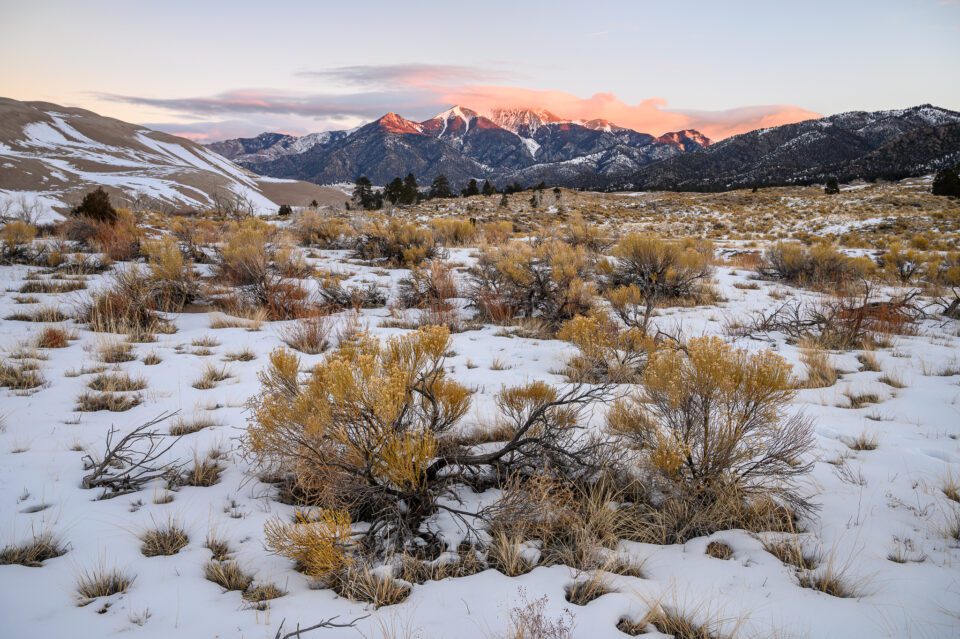

Image Quality Comparisons
How do the Nikon Z6 II and Canon EOS R6 compare in image quality? Let’s first take a look at their dynamic range performance. These are 100% crops from the Nikon Z6 II (on the left) versus the Canon EOS R6 (on the right). The Z6 II image was downsampled slightly to match the EOS R6’s resolution. Both images were underexposed by five stops and boosted in Lightroom:

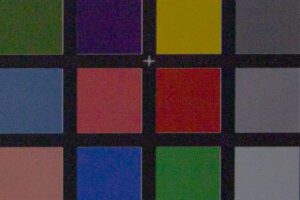
The Canon EOS R6 has perhaps the slightest bit more noise (see the purple color swatch at the top), but the differences are so small as to be insignificant.
What about highlight recovery? Here are images of the same scene that have been recovered from four stops of overexposure:


The Nikon Z6 II has the slightest bit more color in the yellow swatch at the top, but it’s hardly relevant. The dynamic range here is as close as you’re likely to see in cameras from different manufacturers, and it’s excellent in both cases.
What about high ISO performance? Not to spoil things, but it’s pretty similar once again. The images below are 100% crops (Z6 II downsampled slightly), with the Nikon Z6 II on the left and the Canon EOS R6 on the right. Here’s ISO 1600:

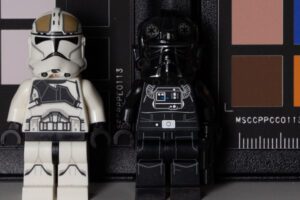
ISO 3200:
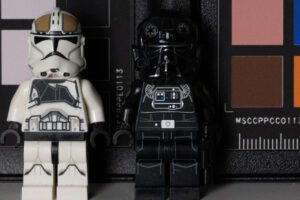
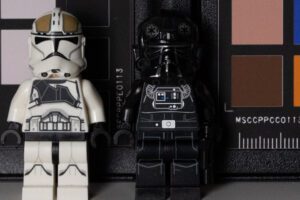
ISO 6400:
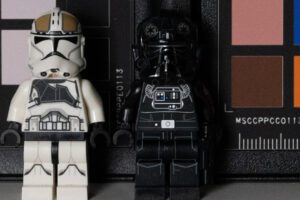
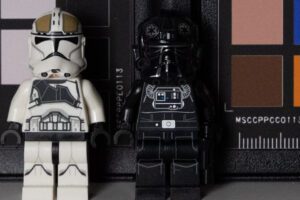
ISO 12,800:
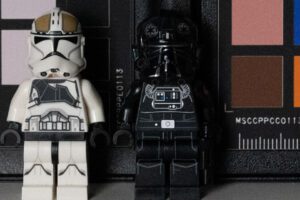
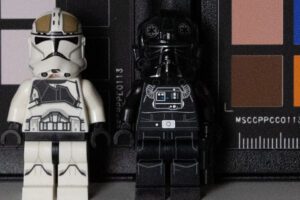
ISO 25,600:
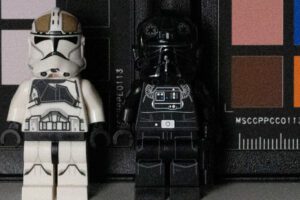
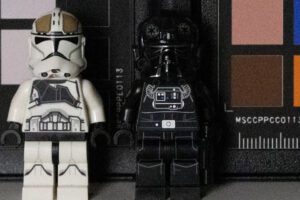
ISO 51,200:
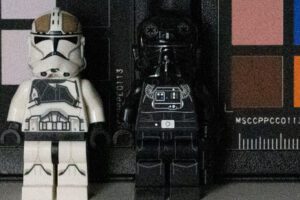

ISO 102,400:


ISO 204,800:
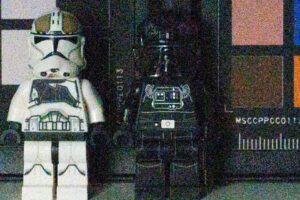
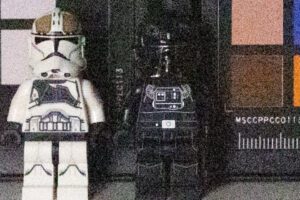
That’s a very similar performance. Up to ISO 51,200, I can’t see any meaningful differences. At ISO 102,400 and 204,800, the Z6 II has a bit more discoloration than the EOS R6, but it also retains some low-level details a bit better. Neither is ahead of the other, but both are excellent overall. The images look usable up to ISO 12,800, and you can even push it to ISO 25,600 without totally ruining image quality. That’s pretty impressive.
Which One Should You Get?
Clearly, the Nikon Z6 II and Canon EOS R6 have some similarities – most of all in image quality. While the two cameras trade punches in specifications, the Canon EOS R6 pulls ahead thanks to its huge buffer, 20 FPS shooting, and excellent autofocus system. However, it’s also $500 more expensive, so photographers who are happy with “only” 14 FPS and a less flexible focusing system can save a good bit of money.
Between the two, even as a Nikon Z user myself, I would recommend that most photographers who don’t have ties to either brand go with the Canon EOS R6. As I see it, the improvements are worth $500, at least if you plan to do sports or wildlife photography. (Both are pretty equivalent for portraiture, thanks to the excellent eye-detect autofocus systems on both cameras.)
That said, my ultimate recommendation is to just stick with the brand you’re familiar with, unless you only have weak ties and switching won’t be very expensive. The Nikon Z6 II and Canon EOS R6 are really fantastic cameras, and both are priced competitively. You can’t go wrong either way.
